Addressing your learning ecosystem as a ‘whole’
Organizations that have a compelling vision of employees skilled at “Creating”, “Acquiring”, “Transferring” and “Applying” knowledge are more agile and have the ability to respond faster to changing environments compared to their competitors. As a result, their employees continuously deliver higher performance. Learning fitness or learning health is an organization’s collective ‘abilities’ to perform. All too often, companies’ efforts to improve the learning ecosystem are concentrated in a single area – greater involvement of leadership, or more focus on mentoring. In the short term, gains are visible but soon disappear. Each of the building blocks of a learning organization is itself multidimensional and inter-connected.
Generative learning cannot be sustained in an organization where event thinking predominates. Organizations want learners to become fully immersed in learning, so that they can develop new strategies on how to solve problems or scenarios. This requires a conceptual framework of “structural” or systemic thinking, the ability to discover structural causes of behavior. Organizations aspire to improve their overall learning health knowing that it is next to impossible to build a culture of continuous learning, where employees exhibit life-long learner behaviors without having a fit and healthy learning ecosystem, but often forget that it takes a whole system’s approach.
The learning health of an organization comprises of several key building blocks:
- Strengthen the partnership – Align Learning with Strategy
Aligning learning strategy with business priorities is the starting point of leading successful learning function. As strategic business partners, organizations must ensure that their capability development initiatives support the mission of the businesses they work with. Key questions to address include – the extent to which the current and future needs of the business drive the learning strategy & plans in the organization, how learning & development budgets are being prepared and allocated and how agile the learning function is to change course and respond to new business requirements. To build alignment L&D teams must:
- Clearly articulate the few critical priorities and must-win battles to which the company and CEO are committed over the next three to five years.
- Align current offerings (courses, content, target audiences, etc.) with the strategic priorities mentioned in the CEO agenda.
- Get inputs and buy-in for the learning agenda from both the learning organization and leaders in the rest of the business — all the way to the CEO level.
- Activate the learning agenda through programmatic activities and changes to the learning portfolio.
- Ensure that the Budget allocation and planning mirrors long term and short term business priorities. Link all spend to performance metrics to ensure scrap learning is minimized and move to a near-zero learning inventory.
- Set up governance councils to review the functioning of L&D periodically and improvise continuously to keep pace with the dynamic business environment. A mix of HR, Learning and Business Leaders in the governance councils can ensure balanced functioning.
- Impact Assessment – Play the role of a return creator
Resources are scarce, and ensuring the effectiveness of spend is critical. As Drucker said, “If you cannot measure it, you cannot improve it.” The one thing we cannot emphasize enough is creating accountability for the money we spend on learning. The L&D budget is at times referred to the “largest unmanaged investment in a company”. Often because of the wasteland of learning that is delivered but not applied on the job- “scrap learning”. Learning which is successfully developed but not applied on the job—comes with high costs. When learners can’t put what they’ve learned into practice, time and money are wasted. This hinders L&D’s ability to raise performance and contribute to impact. L&D’s responsibility is to not only impact change, but also make results measurable and visible. Often, they leave the value they create hidden, taking away from its importance. Most of the times there are simple ways to establish the return on investment. Key aspects to address include –learning metrics that should be used to measure efficiency and effectiveness of learning and the extent to which an organization uses data analytics, predictive modeling in taking decisions related to talent and learning.

This should, in essence, lead to commercial gains, productivity gains, and individual performance gains. At the end of the day, L&D’s goal is to tie learning to results. If organizations can figure out how to help people learn better, they can immediately solve all the other problems. If they get the objectives right, the design right and the delivery right, they will be able to get the effectiveness right.
- L&D Policies & Processes – Learning must be complemented by an aggregated input that spans across the complete employee life cycle
Learning processes involve the aggregation, creation, curation, collection, interpretation, and dissemination of knowledge. They include experimentation to develop and test new products and services; intelligence gathering to keep track of competitive, customer, and technological trends; disciplined analysis and interpretation to identify and solve problems; and education and training to develop employees. The underlying need to build core processes stems from the fact that effective learning cannot be the result of isolated capability development initiatives. All learning must be built around a consistent input of information across key employee “touch points” right from the start of the employee lifecycle to the end.
Organizations need to integrate not just HR systems but also the structures, processes, governance models and strategies to succeed. Borrowing from the Gestalt school of thought “The whole is, after all, greater than the sum of its parts”
- L&D Portfolio – “Charter of Learning” that clearly outlines the L&D function’s reason for being- Raison d’être.
L&D functions should continue to upgrade the nature and quality of services and solutions that they provide to meet the evolving and rapidly changing needs of the business. In many organizations, L&D is still tactical and operational while a few have raised their game where they continuously reconfigure the learning ecosystem architecture addressing both form and function, enable key performance outcomes through consulting, orchestrate and manage knowledge flows and exchange, drive change of learner behaviors and mindset, design learning experiences suited to the modern day learner, use instructional design to power specific learning outcomes, gather and mine business and employee data to improve the quality of decision making and curate content which is suited to the context of the organization.
- Tools and Technology: Connected of Things
We are currently witnessing a learning revolution of which technology is an integral part. Billions of dollars are being invested in new cloud-based Human Capital Management Systems. However, research shows that the HR technology environment is far more complex and chaotic than it was before. Though organizations are looking for a ‘single’ system of record for their employees, they are finding it difficult to find one system that addresses all of their requirements. Having said so, they are continuing to replace older heterogeneous systems including learning management systems that aren’t meeting business and learner needs and that are not integrated with other systems. Organizations require a set of software to deliver a single user interface; build and manage employee journeys, develop apps, create and monitor workflows and add forms of conversational interfaces to the mix to be able to meet business requirements and drive learner engagement. The introduction of Learning Experience Platforms (LXP) is helping them lead, enable, manage and support their L&D agenda and cater to the preferences and needs of the modern day ‘learner’. Such new-age technologies boost the learning health of the organization. Moreover, the ease of integrating such platforms & tools with enterprise-wide systems is ensuring that learning is at the heart and center of their businesses.
- Developing the Learning Professional: An evolving role
The role of L&D is that of a connector: connecting the learner to the learning, the learning to the business, the technology to design, and the context to the content.
L&D is a group of extraordinary potential: the potential to craft life-changing experiences, impact productivity and engagement and drive change. But to do this in today’s day and age, we need to go beyond the conventional and embrace the new.
L&D professionals today must have three emotions in their armor:
- Business partners: A deep understanding of the business and strong stakeholder relationships are key. L&D professionals should treat business leaders as customers and must continuously challenge the business on needs and delivery methods and advise them on opportunities to impact business performance.
- Empathy for the learner: Building shared empathy and understanding is a must-have skill for all L&D professionals today. In the times of experiential learning where we strive to craft life-changing experiences, learning design and delivery cannot be done unless L&D understands the “realities” of learners
- Love for technology: For L&D to serve the modern learner, an appreciation of the role technology plays in the life of a learner is a must. In the age of modern learning, no learning intervention is complete without technology.
- The era of the Learner – Batch Size equals 1
Learner experience is much more than a buzzword; it heralds a paradigm shift. With learner experience, you are not creating a curriculum; you are creating an experience, one that will translate to the single most differentiating factor.
Over the last decade, the Internet, social media, and mobile access have become huge factors in our private and working lives, changing how we interact with information. By making personalized content available to learners anytime, anywhere and on multiple devices, L&D departments have a realistic shot at significantly reducing the learning curve.
- A lasting learning culture: Self Directed Learning
A philosophy where an individual feels responsible for their own development is essential to build an everyday learning culture, rather than an isolated training one. Learning initiatives must be intrinsically driven, for ensuring commitment over compliance. It’s just like therapy – you can’t really change unless you know there is a problem and want to.
Self-driven learning will come as a natural corollary to well-designed talent programs that allow individuals to achieve mastery in fields of interest or appeal to their sense of purpose.
As Dr. Kalam put it: “True learning is not a process of pouring in from without, but a calling forth what is within. It’s a process of nurturing, of allowing, of evoking. It is a process of bringing forth the person one is meant to be…”
In today’s workplace, where constant and rapid change is necessary to remain competitive, the best strategy is to create multi-faceted and flexible learning eco-systems, educate the learner on being a smart consumer, set and maintain context, and get out of the learner’s way.



